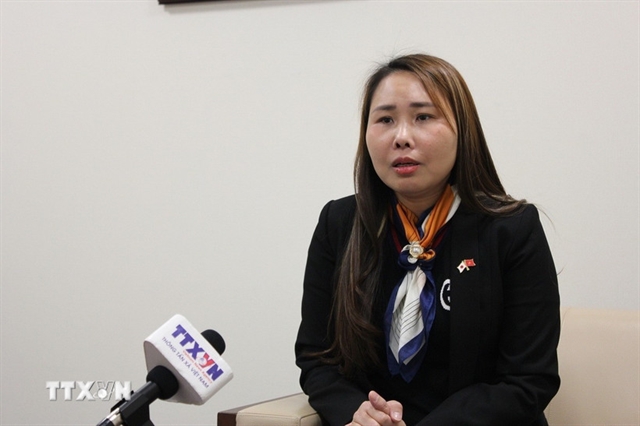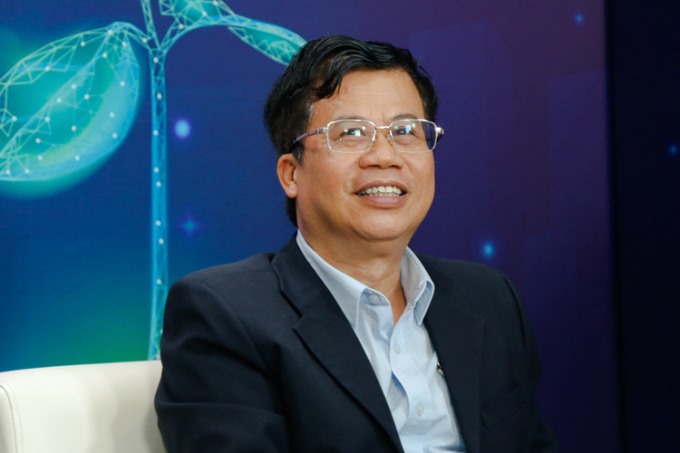 Opinion
Opinion

Deputy Director of the Department of Livestock Production under the Ministry of Agriculture and Rural Development Tống Xuân Chinh spoke to the Government Portal about measures to ensure ingredients for animal feed production, one of the key tasks assigned by the Government Resolution 128 on safe and flexible adaptation to and effective control of COVID-19.

|
Tống Xuân Chinh
Deputy Director of the Department of Livestock Production under the Ministry of Agriculture and Rural Development Tống Xuân Chinh spoke to the Government Portal about measures to ensure ingredients for animal feed production, one of the key tasks assigned by the Government in Resolution 128 on safe and flexible adaptation to and effective control of COVID-19.
According to Resolution 128, developing domestic sources of materials for animal feed production is needed to reduce dependence on imported ingredients. Which measures will the sector take to carry out this task?
In terms of policy, the Ministry of Agriculture and Rural Development proposed the Government reduce import tax for animal feed, including from five per cent to three per cent for corn and from three per cent to zero per cent for soybean. The ministry is also building a draft Government decree on improving the efficiency of livestock production during the 2021-30 period and implementing the strategy on livestock production development during the same time frame which was approved by the Prime Minister on October 6, 2020. To implement the strategy, five master plans have been developed on industrialising animal breeding, animal feed production, livestock slaughter and processing, farming and treatment of waste from livestock production, and scientific and technological renovation in livestock production.
The master plan on industrialising animal feed production will put forward measures to renew this sector, including solutions needed to reduce the import of raw materials for animal feed production.
Regarding livestock-raising techniques, farmers need to use available local animal feed ingredients such as rice bran, corn and cassava to mix with animal feed and medium- and large-scale farms need to invest in modern technology for food storage.
In terms of the planning of material zones for animal feed production, the sector is studying related policies and mechanisms to create conditions for organisations and individuals to accumulate agricultural land into large-scale fields and to apply science and technology to produce corn and soybean for animal feed.
The structure of livestock products in the long-term strategy needs to reduce the proportion of pork while increase poultry meat and grass-fed animal products. At present, pork consumption in Việt Nam accounts for up to 70 per cent and poultry meat accounts for 20 per cent while the world’s figure is 30 per cent for pork, 40 per cent for poultry and 30 per cent for beef. Moving from consumption of pork to consumption of poultry products will bring in two benefits which are protecting the environment and saving on animal feed.
Regarding agricultural by-products, how has this source of materials been processed for feeding livestock and what are the measures to help reduce input costs?
Each year, Viêt Nam has around 156.8 million tonnes of agricultural by-products, nearly 90 million tonnes of which can be processed and preserved for feeding livestock, helping to replace some of the imported materials for animal feed production. However, this huge potential has yet been effectively exploited.
The Ministry of Agriculture and Rural Development is guiding agencies, including the Department of Livestock Production, to build policies to support organisations and individuals to invest in technology to collect, process and preserve agricultural by-products for the production of animal feed and organic fertilisers.
I think the planning of material zones for animal feed production is still the most important but also the hardest as it required synchronous investment in developing agricultural land management and investment in science and technology.
Any policy needs timely and attractive resources as well as effective supervision and assessment mechanisms. Amid the context of limited State budget, the mobilisation of resources from the private and Foreign Direct Investment (FDI) sectors under the Public-Private-Partnership (PPP) model is an appropriate choice.
Reducing the price of input materials can help reduce production costs for farmers. What needs to be done to achieve this?
Apart from the above-mentioned solutions, the reduction of logistics cost in importing animal feed materials and commissions from intermediary stages like animal feed supplying agents will also help the animal feed prices to drop.
We also need to renew and renovate animal breeding systems, animal husbandry process and feeding and tending process.
Localities should implement the Government direction on COVID-19 prevention and control while developing the production, transport and consumption of animal feed as well as supply of materials for livestock production.
What is the situation regarding supply in the remaining months of the year?
With the resolute directions from the Government, ministries and sectors, the pandemic will gradually be controlled, helping the supply of both inputs and outputs for the livestock production industry resume normal operations.
It is forecast that in the remaining months of the year, particularly on the occasion of the Lunar New Year, the consumption of livestock products will increase from 15-17 per cent. The livestock industry at present still keeps stable production. In the first nine months of 2021, the whole country produced more than 4.7 million tonnes of meat and 12 billion eggs and exports of livestock products reached over US$1.2 billion.
From these results, the department has forecast that the food supply will be ensured. The livestock production industry is expected to fulfil its target of posting an average growth rate of 5-6 per cent in 2021 amid the context of difficulties caused by the COVID-19 pandemic. — VNS